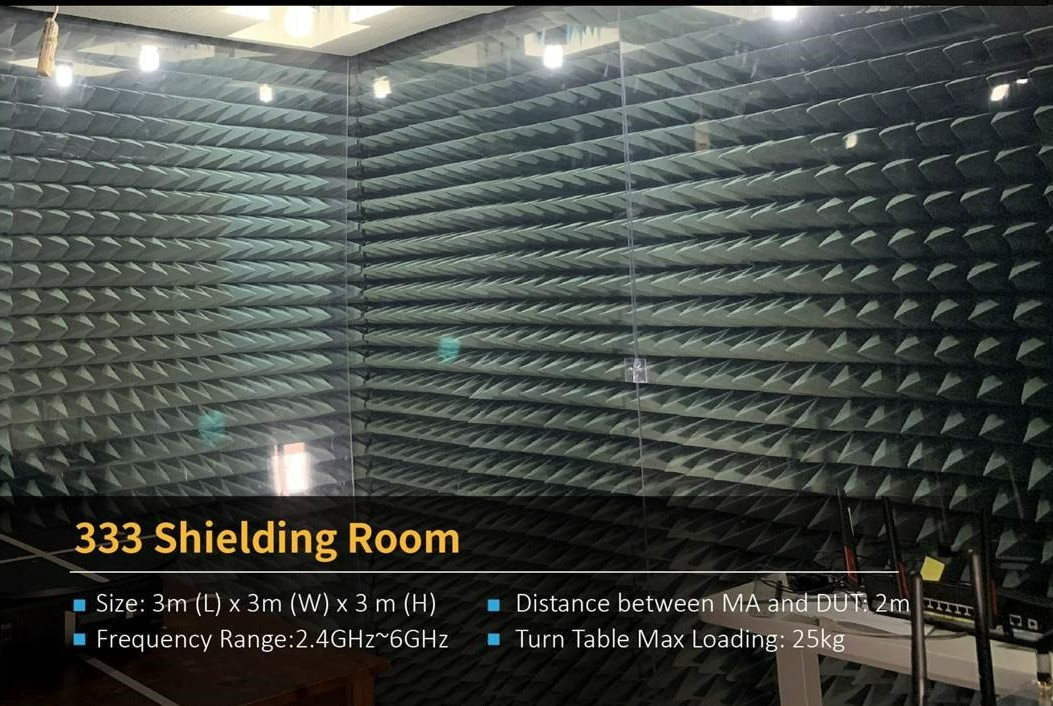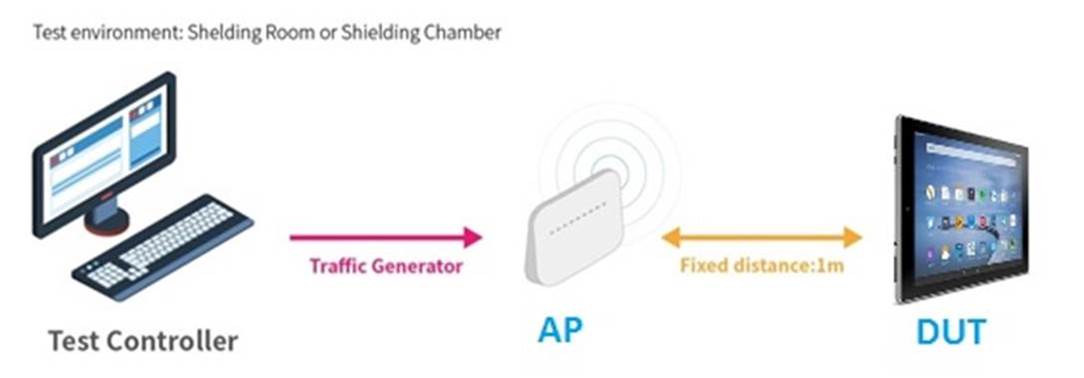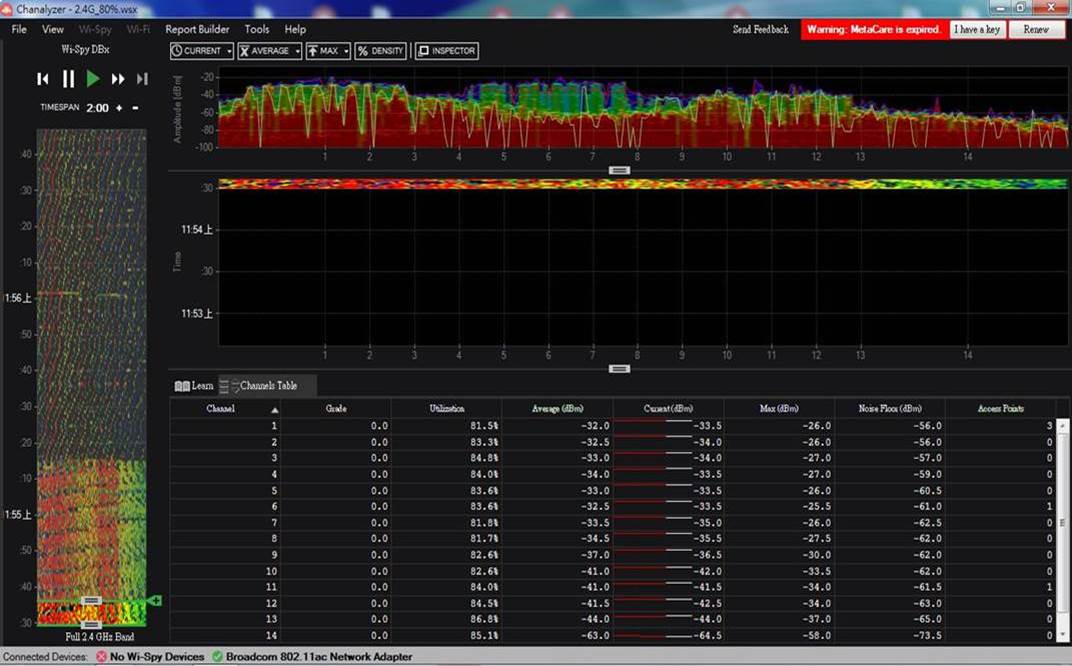Allion Labs
We will dive into the performance of the wireless networks of tablets after comparing tablets’ battery life and charging performance in the first part of the review. The wireless network plays a crucial role on tablets because there is no port for connecting the wire cable; hence wireless networks are the only option for tablets to connect to the internet. Upon receiving the tablets, the very first thing to do is set up accounts, upgrade software, and so on via the internet. Internet is even needed for website browsing, online shopping, TV dramas, downloading apps, and online games. Hence there is a huge influence of user experience on the efficiency of wireless networks on tablets.

Image: Testing Environment – Wireless Shielding Room
This article mainly introduces the performance of wireless networks on different tablets; the entire test is taken place in a wireless shielding room to ensure the consistency of the examination from external interference; the following are included in the trial.
- The capability of uploading and downloading
- Transmission performance in a congested environment
- Coexistence performance with Bluetooth
- Performance at different distances from Wireless Access Points

Chart: Tested Tablet Model
First, we will look at the capability of uploading and downloading on a wireless network with ASUS RT-AX88U (Firmware version: 3.0.0.4.386.48631) as wireless access points encrypted with WPA2-PSK-AES. The software of IxChariot (Test Script: High_Performance_Throughput.scr) is utilized to test the capability of uploading and downloading using 2.4GHz (Channels 1, 6, and 11) and 5GHz (Channels 36, 149, and 161), respectively.

Image: Testing Diagram
The test data of 2.4GHz on 5 different tablets:


The test result is similar for 2.4GHz, and the upload speed is 50Mbps or more. Walmart performs better with speeds of 70Mbps. On the other hand, there is not much difference in download speed on each tablet within the range of 50-60Mbps, which is far greater than the need to watch 4k movies (>30Mbps).
The test data of 5GHz (Bandwidth 40MHz and 80MHz):




We can see HT40 exceeds 150Mbps with 5GHz, and Walmart performs better. The test result is twice HT40 which exceeds 300Mbps under HT80; hence 5GHz satisfies the needs of drama viewing, app downloading, and online gaming.
Second, we will look at the performance of wireless transmission in a congested environment. It is impossible to use a wireless network without external interference by the different wireless networks from neighbors. Generally, the interference in a home environment is about 20-30% and 40-60% in an office environment. The highest percentage is about 70-80% in a crowded area, like a coffee shop. The test took place in an environment with 80% interference for testing performance on transmission.

Image: 2.4GHz Spectrum Diagram with 80% Congestion
The test data on 5 tablets under congested environments:




Based on the test results, the performance of each tablet decreases significantly under the influenced environment. The efficiency of tablets with 2.4GHz decreases more than other tablets causing the speed to be significantly impacted. Furthermore, even image quality and loading speeds of videos and movies are negatively affected. On the other hand, although there is still a certain influence with 5GHz, the speed of uploading and downloading remains above 100Mbps. Hence, it’s recommended to use a 5GHz network in a congested environment.
Next, we will look at the performance of Bluetooth; the working frequency of it is also 2.4GHz and therefore it will conflict with networks with the same frequency. Besides connecting to the internet with tablets, users also pair their earphones with tablets via Bluetooth to play music. We will determine if the performance of each tablet is affected by Bluetooth transmission.


Based on the data above, the wireless network speed is above 50 Mbps when Bluetooth is off. On the contrary, we notice that the speed decreases 20-30Mbps when Bluetooth is on, which indicates that Bluetooth greatly impacts the wireless network. Hence, it’s highly recommended to use 5GHz frequency to ensure internet performance is not affected when Bluetooth is activated.
Finally, we will look at the performance of network speed at different distances away from wireless access points. An attenuator simulates the distance between the tablet and the wireless access points. The larger the attenuation value, the farther the space is.

Image: Rate Venus Range Structure




There is little difference in the descending slopes pictured in the graph, but it depicts that Walmart has a slightly better design on the antenna. The performance is 6dB greater with 2.4GHz and 3dB greater with 5GHZ. Therefore, the distance can be set farther when in use; in other words, the transmission speed is higher at the same distance from the wireless access point.
That’s all for the review of performance on tablets; next time, we will analyze the performance of tablet screens, which is mainly affected by brightness, color temperature, contrast ratio, and gamut chart to help everyone understand the difference and performance of various screens; thank you!


































